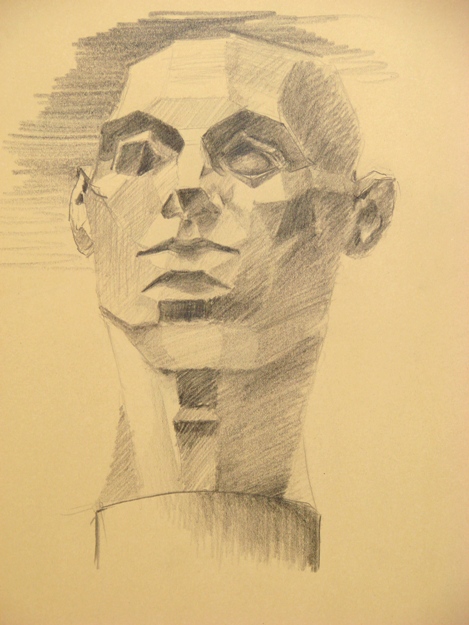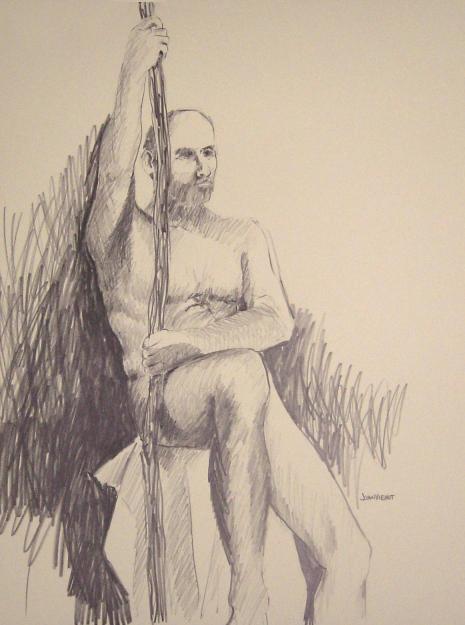
 We had a new model at figure drawing at Studio b. this week. Every model brings his or her own energy to the session, which adds to the excitement. This model took a very wide variety of poses, some extremely energetic and ambitious, and others very natural and relaxed. I enjoyed the variety and contrast. I’ve begun taking a course on head studies and portraiture, so I tried to pay a little more attention to the facial features and attitude. It never ceases to amaze me how I can make a passable effort until I focus and try to do a good job, and then it is as if I had never seen a pencil before, it turns out so badly.
We had a new model at figure drawing at Studio b. this week. Every model brings his or her own energy to the session, which adds to the excitement. This model took a very wide variety of poses, some extremely energetic and ambitious, and others very natural and relaxed. I enjoyed the variety and contrast. I’ve begun taking a course on head studies and portraiture, so I tried to pay a little more attention to the facial features and attitude. It never ceases to amaze me how I can make a passable effort until I focus and try to do a good job, and then it is as if I had never seen a pencil before, it turns out so badly.
Our instructor, Heather Clements, suggested we take a different approach to the initial gesture, and I will try to learn how to do that. Her suggestion was to in effect draw a stick figure or a stick-skeleton, which can be roughed in fairly quickly to establish the overall directional line and then the individual limbs and sections of the body. Once the “armature” is established, it is easier to compare relationships of one part to another, and then to make corrections.
As always with new models, I struggled trying to learn how to draw him. You would not think there would be that much difference from one figure to the next, but there are worlds of difference. We’ve been rotating models for a while a Studio b., so that we don’t return to a previous model for perhaps as long as 8 weeks, unless one has to fill in for another. That has added to the challenge for me. When I am struggling, I learn more.



































